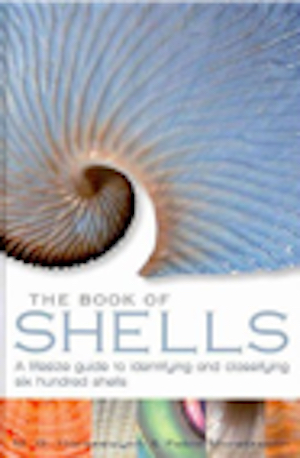|
2010, A&C Black. 656pp, Hardback, £35. Written by two American academics, this book commences with brief introductory sections covering: “What is a Mollusk?”, “What is a Shell?” and shell collecting. The piece on how a shell forms is one of the clearest I have seen. The bulk of the book looks at 600 worldwide marine shells – mainly bivalves and gastropods, with a few chitons, scaphopods and cephalopods. The number of species covered seems limited compared to other volumes, but each species is treated on a full page allowing greater depth of coverage. Most species shown are familiar, but with a good selection of the less familiar; many more micros than usual, species with Arctic or Antarctic distribution and from abyssal areas or hydrothermal vents, some recently described species, and two – Exilia blanda and Daffymitra lindae – known only from the holotypes. All good to see. For each species as well as scientific and common names we are given details of size range, distribution, abundance, depth, habitat and feeding habit, with details of operculum for gastropods and byssus for bivalves. There is also a detailed description of each shell and a distribution map, though the latter are not always clear particularly for those species with limited distributions. A short, informative and authoritative, paragraph discusses each species, variously covering, among other things, biology, ecology and habitat preference, nutrition, human usage, geological history and much more. To give a few examples: Pisania pusio is “almost always found in pairs, rarely more than 1 ft (30 cm) apart from each other”. Megathuria crenulata’s “haemolymph (‘blood’) has promising biomedical applications, therefore several companies are currently investing in its aquaculture.” “Gaza have been observed to swim by flapping their broad foot to escape predators”. “Macleaniella moskalevi is the deepest-dwelling known mollusc. It has been collected at depths of 28,200 ft (8,600 m)”. Cyrtopleura costata “is harvested commercially in Mexico and Cuba. Because of its rapid growth, it has potential for aquaculture”. “If touched Lima scabra detaches some sticky tentacles to delay the predator” while it swims away to escape. Turbinella angulata “is an important food source in the Bahamas, where it is known as the Pepper Conch”. Gemma gemma “can occur in densities of 83,333 clams per sq yd (100,000 per m2)”. The strength of this volume lies in these detailed accounts, which contain a wealth of information. Each species account is accompanied with a colour photograph of the shell. Most shells are shown at natural size, many with additional enlarged images to enhance details particularly of sculpture, while larger species are depicted in reduced images with a small section at natural size – the latter I found unhelpful. Micros are depicted both at natural size and in SEM enlargements. A few of the images are rather artistic – the spire end views of Bathybembix bairdii, Olivancillaria urceus and Harpa costata do not particularly aid identification, while the coloure of some plates overemphasises the red spectrum. I wish that more species had been shown in both dorsal and ventral views (gastropods) or with interior and exterior views (bivalves) to make better use of the available space. For example reading that “Periploma planisculum has a spoon-shaped projection of the valve right under the umbones, called a chondrophore...” would have been made clearer with an interior image shown. Appendices include a good glossary, a four page ‘evolutionary classification of the Mollusca’ (which will be superfluous to most general readers), a two page list of resources; part bibliography, part list of useful web sites and web contacts for selected national and international organizations – though these tend to be more academic organisations, all of which could usefully have been enlarged. Finally there are separate indexes for common and scientific names. There are many identification guides to shells on the market, some even much smaller and cheaper volumes – covering considerably more species. If you simply want to identify shells this is not the best volume to begin with. If however you want to learn about shells then this is an excellent starting point. I certainly found much of interest, but more in the text than the illustrations.
|
|
BOOK REVIEW: The Book of Shells by M.G. Harasewych and Fabio Moretzsohn
Issue
26
Page
20

